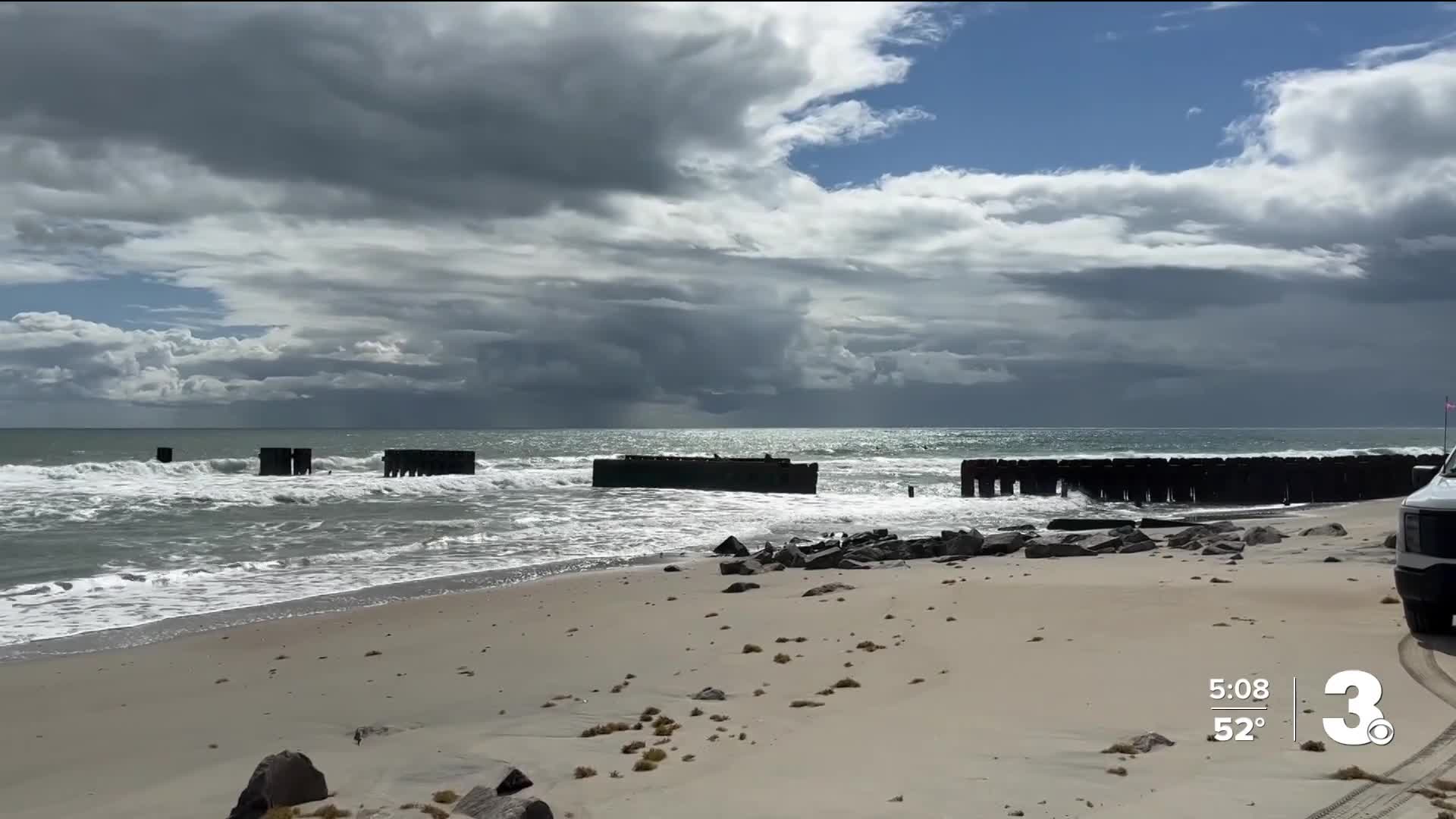BUXTON, N.C. — One hundred. That's how many combined threatened oceanfront structures remain in Buxton and Rodanthe. A lengthy discussion at Wednesday's Coastal Resources Commission meeting in Beaufort ultimately led to a motion being passed for the CRC Science Panel to start exploring all options to address the rapidly eroding shorelines.
"Today, there's 52 threatened oceanfront structures in Buxton and 48 in Rodanthe. If every one of those houses were to fall tomorrow, there would be another 100 right behind them," said Dave Hallac, superintendent of Cape Hatteras National Seashore when he addressed the CRC on Wednesday.
The current challenges of Buxton and Rodanthe were spotlighted at this week's CRC meeting, bringing to the forefront that something needs to change for areas facing rapid erosion.
"We cannot continue with the policy framework built for the 1980s while facing the coastal hazards of the 21st Century. We cannot allow houses to collapse into the ocean and call it natural. We cannot expect coastal homeowners and local governments to cope with the consequences of erosion without modern tools," said Jordan Hennessy, a member of the CRC.
A major part of the discussion continues to be North Carolina's ban on hardened structures on the coastline. To protect their homes, owners really only have two options: move it or place sandbags in front of it.
"We need the state to revisit the statutory ban on hardened structures to allow us to use 21st Century engineering to solve 21st Century coastal challenges," said Hennessy.
Dare County Manager Bobby Outten explained that beach nourishment is currently their only option and it will always be a temporary solution. A planned jetty repair in Buxton is expected next year, along with beach nourishment. But overall, Outten feels conversations about any and all options are needed to address the future of Buxton and Rodanthe.
"The hardened structure ban prevents us from looking at anything else other than beach nourishment, and I don't think that's a tenable solution in the future, either practically or politically. I think we got to start having the conversation, thinking it through, determining what the consequences are, decide what we can live with, what we can't live with, and then start doing something somewhere to see if the ideas work," said Outten.
The CRC passed a motion asking its Science Panel to start working on a report to outline what their options are. The word "solution" is a loose term, but ideas range from insurance payouts to homeowners before collapse to hardened structure allowances and everything in between.
"The term solution is a little tricky, because these changes are coming and they will get more severe and there really isn't a true solution. I think there are things that can buy more time, that can stem change. Ultimately though, there may need to be some really creative approaches," said Laura Moore, chair of the CRC Science Panel and a professor of coastal geomorphology at the University of North Carolina at Chapel Hill.
Moore spoke to News 3 about coastal erosion in Buxton in early October, sharing that there is give and take when it comes to hardened structures on the shoreline.
"Certainly, nourishment in conjunction with a groin will likely slow the erosion down for some period of time. However, the erosion rates are so high in this location that it will require an extremely large amount of sand in place at an extremely frequent interval in order to maintain the shoreline in a position that would prevent further loss of homes," said Moore. "And so might there be some temporary relief, perhaps, but we are going to continue to see the shoreline attempting to erode at rates that are likely to become even faster than what we've seen in the past."





